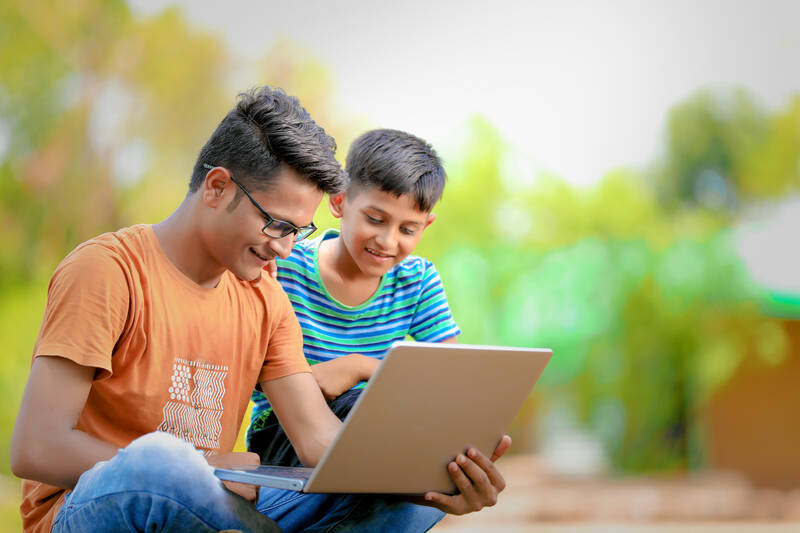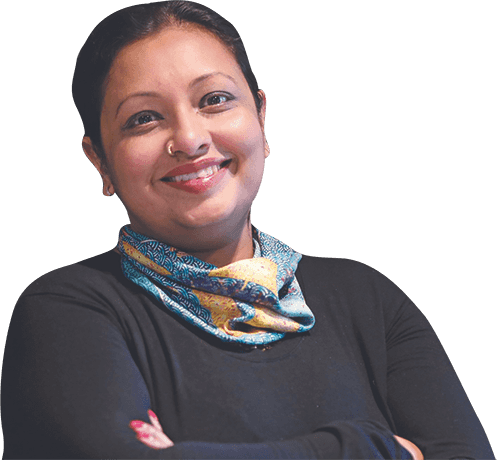
Leverage existing technology to provide all with equal access to healthcare services
As you step outside into the streets in an urban setting, one commonplace observation would be that each and every person has a mobile phone. At any instance, a smartphone would be held in the palms of a pedestrian.
Germany, one of the world’s most developed countries, has an 88.48% mobile phone penetration rate. But this is not limited to the developed world. Kenya, Tunisia, Namibia and Morocco have exceeded 100% mobile phone penetration rates. Thus, it is safe to conclude that everyone has a phone these days.
This provides a great starting point for the agenda of digital inclusivity, especially in delivering healthcare. The year 2020 has forced us to live in a new normal with COVID-19 serving as an amplifier. In the midst of change and uncertainty, one thing is for sure – digitisation is driving adaptation.
“It is not the strongest of the species that survives, nor the most intelligent that survives. It is the one that is the most adaptable to change.”? – Charles Darwin
Leverage Existing Technology
A combination of three delivery approaches can catalyse health systems of rural areas. A great way to improve the lives of people is to employ community-based health officers, adopt mobile phone-based telemedicine, and deploy networks of mobile health clinics. In addition, organisations that work on the ground to bring healthcare information to the people they serve will now – in the era of a pandemic and hopefully soon, post-pandemic – need to evaluate their delivery mechanisms.
To exemplify, 28-year old Katja sells chillis daily in the local market in Naivasha, Kenya. It takes her two hours to travel to and fro daily to support her family of four children, all aged below ten. Time is of crucial essence for Katja and like the other 80% of rural Kenyans, she will never see a doctor in her lifetime. However, Katja does have a mobile phone which she uses to communicate, to entertain herself, and to also keep updated. She is adept at using her mobile phone for online transactions, payments and appointments – to name a few.
Healthcare NGOs operate locally in the fields of malaria, polio, sexually transmitted diseases, contraception, domestic violence – a myriad of services, but they operate labour intensively. Teams of local healthcare communicators need to step into the field, making home visits, recording feedback manually. Reporting back to donors is also very tedious and adherence to the key performance indices can be complicated.
What if, for example, an arbitrary organisation called “contraception adherence network” completely digitises its work process? Informing Katja on her options, giving her a quiz to see which available options suit her best, and sending her timely reminders to check in on her adherence.
Many services are digital especially in developing countries but organisations need to ensure they write in a request for digitisation in their funding requests – both for the deployment of the services of the respective NGO or social purpose organisation and ultimately for ensuring the funds are used most effectively.
The use of digital health solutions empowers individual women who may have been excluded in the overall digital inclusivity process. The advantages for resource-constrained healthcare systems are huge – especially leveraging off existing infrastructure and resources. Importantly, governments would have access to data to make accurate decisions.

Technology lends various potent tools to balance the scale and transcend geopolitical boundaries
Equality with Digital Inclusion
A success story so far is through Agnes Kam, an indigenous woman who lost her mother due to complications delivering her eighth baby in Sarawak, a Malaysian state on Borneo. Agnes has taken the role of community champion, empowering community members – teams of women in each longhouse, village and town she visits. She involves them in digital tools and speaks to community members to overcome traditional barriers to healthcare access. This, essentially, created a support network of peers, guided by technology.
Her community presence while constantly pushing last-mile delivery to include all digitally is definitely a hopeful way forward in bringing equal healthcare access. Urban West Malaysia enjoys universal healthcare akin to developed countries; however, rural areas and East Malaysia are left behind due to various geopolitical reasons. Digital awareness and inclusivity in bridging the healthcare gap will go a long way in bringing equal access to healthcare. This requires a combination of community health workers, digital tools, and medical facilities.
People like Agnes work tirelessly to better the community they serve. As Steve Jobs once said: "You‘ve got to start with the customer experience and work backwards to the technology.” Digital inclusivity means creating products that can be fully utilised by the people who most need them.
Empathic design is crucial in ensuring an emotional relationship between the user and the product created. Working from the ground up in a collaborative process is definitely one of the strongest ways of building a digital tool that would be most efficient. Looking at local literacy rates, pivoting to video and audio where required are part of digital inclusivity. Speaking in local languages, in tones that are applicable will make any digital tool far more palatable.
Back to Katja, the burden of unpaid work during COVID-19 is hitting her harder than many others living through this pandemic. Managing the finances of her household while trying to keep up with her own health, and her children’s health – which she prioritises over hers – slowly but surely adds on a mental burden. Digital tools will enable her to keep up to date with vaccinations, adherence to medications, and digitally connect with a mental health service provider. All of these could be a big leap in ensuring her well-being.
Passion for Inclusion
The good news is that there is no necessity to reinvent the wheel. Digital education and access tools are abundant, sophisticated and yet simple. The ingenuity would be to remain useful – working with lower bandwidths, and importantly, not simply shifting the problem to another place.
Digitisation of healthcare – be it in rural Kenya, Borneo, or Germany calls for a reexamining of the existing healthcare system – the gaps, the wins, the eventual user benefits. The pandemic has limited person-to-person contact and has pushed those of us working in the sector to examine better methods of reaching those excluded by general health services – often the world’s most vulnerable. In the words of Lady Gaga, we have to believe in a passion for inclusion.
Shamala Hinrichsen is the founder and CEO of Hanai. Her mission is to bring equal access to healthcare to women – anywhere. A scientist by training, she switched gears to medical writing – working in corporate, research, and government. She founded Hanai after a four-month sabbatical mapping the rural healthcare landscape in India. Hanai connects the organisations that need to reach rural and marginalised communities and their beneficiary base via a technology platform – apps.


